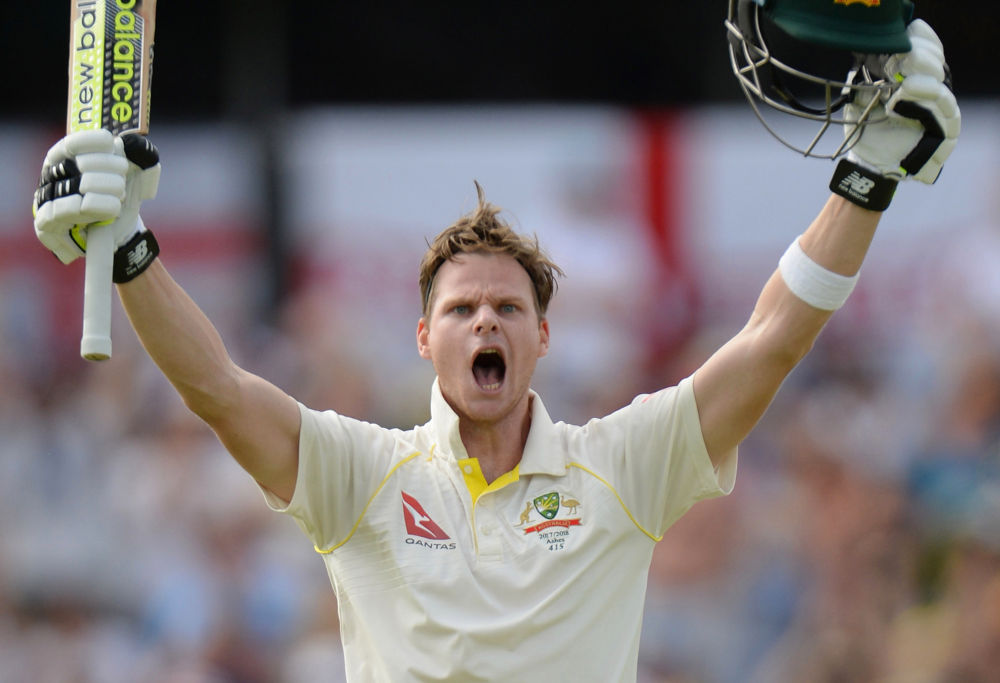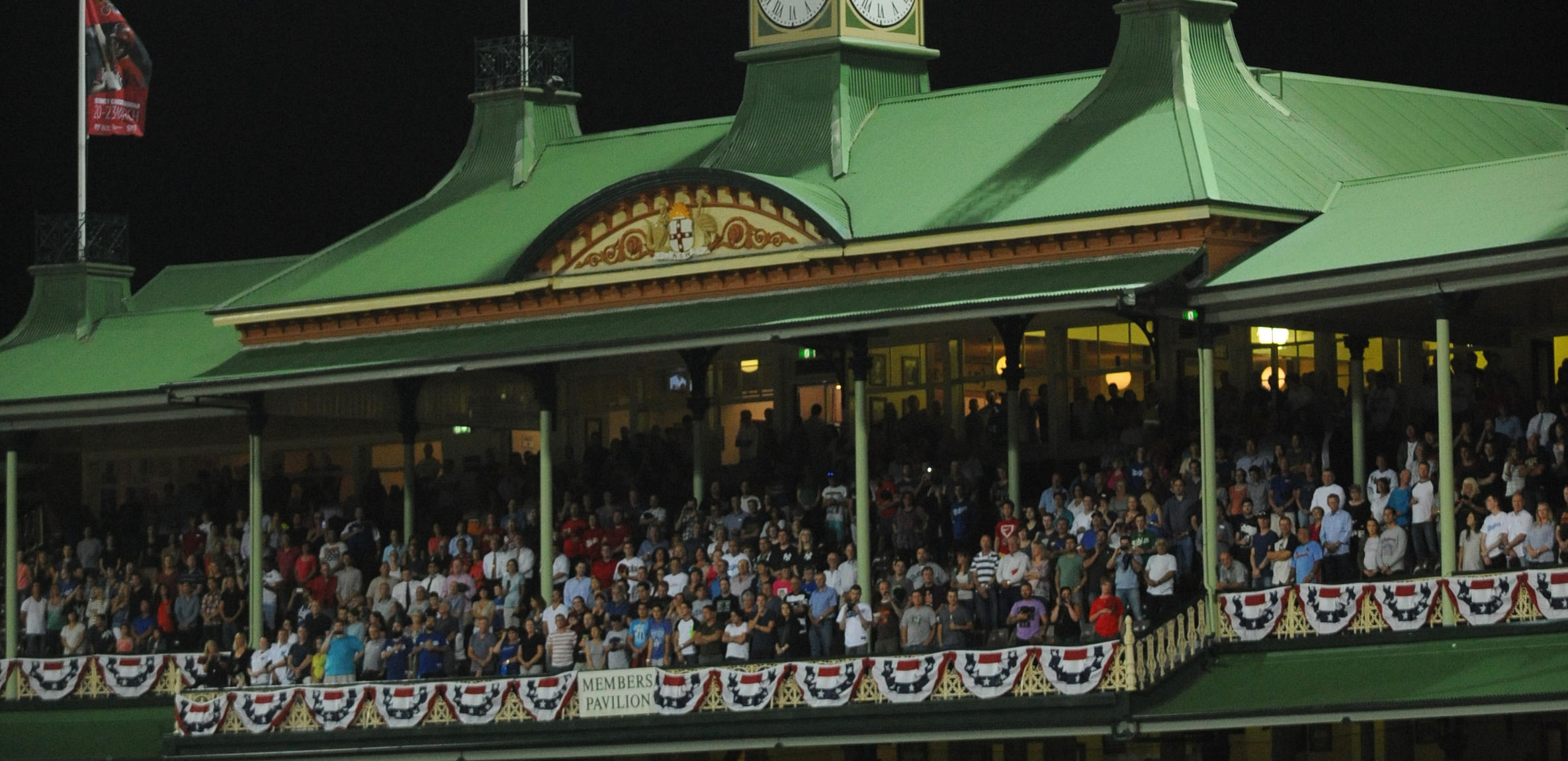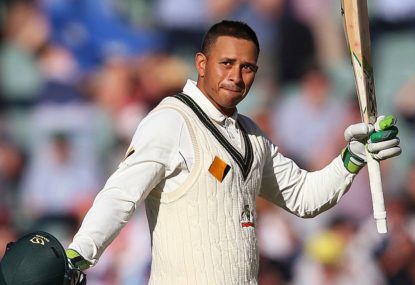While Australia regained the Ashes 4-0 this year, and the majority of the national media cheerlead for them along the way, there is an increasing divide between the competitiveness of series, and the balance between bat and ball, of Test cricket in Australia.
Television ratings and crowds might been up this summer, however an Ashes summer only comes around every four years and fans won’t continually turn up to watch turgid affairs which are dominated by batsmen and contain several dead rubbers.
The best Test match this summer was the day-night Test in Adelaide, once again, because the ball nipped around and there was a genuine contest for batsmen.
A feeling that something could happen every ball. The best Test matches are games with scores between 250-350. You only have to go back to last week’s South Africa/India first Test Match in South Africa, or Australia’s four Test Tour of India last year, to witness a riveting series, even if the wickets were turning square from Ball 1 on occasions, or seaming.
I’m not suggesting these wickets are perfect, but they Test a batsman’s skills far more, and surely are more captivating and entertaining, regardless of the result.
Since 1994 in Australia, we have not had a five-Test series that was alive come the final Test. The six Ashes series have all been decided by two Tests or more, with three series being decided by four Tests or more in Australia’s favour.

(Photo by Philip Brown/Getty Images)
England have been beaten to the tune of 3-1, 4-1, 5-0, 5-0 and 4-0, while their victory in 2010 was a 3-1 triumph. Australia did beat the West Indies 3-2 in 1996, however the West Indies won a dead rubber in Perth.
The last truly great five Test series in Australia was back in 1992/93 when the West Indies stole the game in Adelaide by one run, before trouncing Australia in Perth to claim a 2-1 win after being down 1-0 with two Tests to play.
Home sides are increasingly dominating across the world, with South Africa the only side to win more than one series in Australia over the past 25 years.
With broadcasters desperate for the game to last five days, and venues themselves equally desperate to secure gate receipts for all five days, curators are under more and more pressure to produce pitches that go the distance.
Perhaps we finally reached a tipping point in the Melbourne Boxing Day Test, where a really flat batting wicket was highly castigated as one below Test standard in the media, and through various cricket websites.
So much so that there was an official investigation taken by the pitch inspector after both Steve Smith and Joe Root declared their dissatisfaction with the wicket’s slow surface. I believe some sort of pitch inspector and points systems for wickets would be a good start, with wickets being penalised for being too flat, as equally as being underprepared.
If you live in Sydney as I do, the Sydney New Year’s Tests, over the past 25 years, have contained just a few live rubbers.
In Sydney you have to go back to 1994 for a real thriller, when South Africa defeated Australia by five runs. In 2008 we also had a good finish when Michael Clarke took three wickets at the death, in what looked like a dull draw for most of the match against India.
Outside of those two, it’s been slim pickings for fans craving a live series or thrilling Test match, with more individual recollections like Steve Waugh’s hundred off the last ball being the lasting memories for SCG Test attendees.
In Sydney, six of the highest ten overall match aggregate runs have occurred at the ground in the last fifteen years.

Test matches have been played at the SCG since 1883, yet in 2003, 2004, 2008, 2011 and 2015 we had over 1300 runs scored, with over 1500 runs in three of those Test matches. It’s even more pronounced at the revered WACA ground, where the general consensus is the pace and bounce is great for bowlers, however the stats tell a different tale.
In the history of Tests at the WACA, seven of the ten highest all time match aggregate runs have occurred in the last twelve years. That’s 2005, 2006, 2008, 2011, 2013, 2015 and 2016, where over 1300 runs and up to 1672 runs were scored.
The Gabba might have been a fortress for Australia; however it’s also been the home of several huge scores and lopsided games over the past fifteen years. Seven of the highest ten overall match aggregate runs in the history of Gabba Tests have occurred since 1996.
Some of the current great batsmen of today are playing on surfaces at home which are generally far flatter, meaning comparing players from previous eras becomes more and more difficult. It also adds to the inflation of players’ averages in home conditions, compared to players of the past.
It doesn’t mean they are not great players; however comparing modern day players to guys who played Test cricket for Australia in the 1980s 1990s becomes tricky. Is an average of 47 or 48 in today’s Test Cricket comparable to an average of say 40 or 41 in Test cricket of 15-20 years ago?
The likes of Michael Clarke, Michael Hussey, Matthew Hayden and David Warner have been, or are, great players for Australia. However, it is interesting to take a look at their home records compared to their averages in overseas Tests, as there is a fair discrepancy. David Warner averages 59 at home, yet only 38 in overseas contests.
Similarly, Usman Khawaja averages 59 at home, yet only 27 on the road. Players like Michael Clarke, Michael Hussey and Matthew Hayden were all-time greats of Australian cricket; however had significant discrepancies at home to overseas. Clarke’s average was 23 runs higher at home, averaging 62; Hussey’s was 20 runs higher at home with 61 compared to 41; while Hayden was 15 runs higher at 57 at home, compared to 42 overseas.
Then, when you look through some player’s records, it is apparent that some might have been understated as great players. Simon Katich, for example, played nearly double the amount of his 56 Tests overseas.
In 35 Tests overseas, he averaged 46, which is a full four points more than Hayden, Warner, Hussey and Clarke away. Katich played just 21 home Tests, which leaves you to wonder what his average could have been should he have played another 30-40 games on our shores.
Similarly, Damien Martyn averaged 46 on the road from 34 Tests. Allan Border averaged a remarkable 55 overseas from 68 Tests, while Steve Waugh averaged 55 from 78 games.
Steve Smith averages an amazing 75 at home, but has also been the business overseas, averaging 55, which is why he is being highly lauded as potentially the second best Australian batsman of all time.
So what is the solution for this situation of flat wicket and lopsided contests? From a pitch point of view, a radical solution, which does have some merit for mine, is reducing Test cricket to four days.
Mark Taylor, a Cricket Australia board member and respected commentator has championed this idea for the past couple of years.
I feel the way teams are playing now is generally more positive, with faster run rates and bowlers designed largely to take wickets, rather than contain.
This decision could also make Test cricket more attractive to ageing players, who now often sacrifice their International ambitions for T20 franchises.
Test cricket is competing more and more with Franchise T20, and needs to provide a genuine contest to get supporters fully locked in once again or the game will slowly die out. The game is over exposed around the world these days, with far too much cricket played, so we need to make sure each series has meaning and merit.
The Test Championship is a great concept, but now we need more balanced pitches to to get the longer version of the game thriving again, and ensure the best batsmen of today don’t have it all their own way.
































































































